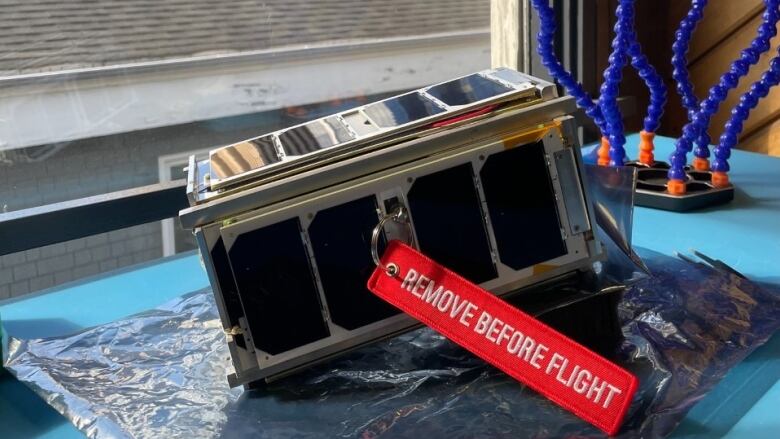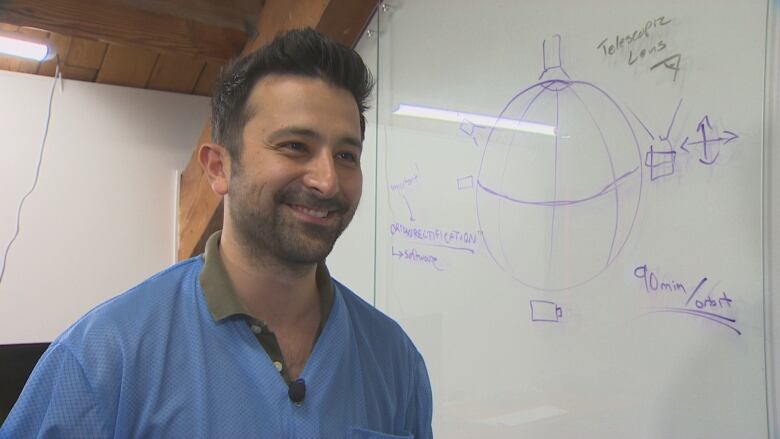Tiny satellite built in Nova Scotia ready for 1st mission to space
'I always had my eyes in the stars,' says member of Dalhousie Space Systems Lab

Students with the Dalhousie Space Systems Lab have constructed the first satellite made in Nova Scotia and it will soon be launched into space an Atlantic Canadian first.
Several universities received federal funding to build a nanosatellite in 2018. Teams from Dalhousie and the University of Victoria were first to finish.
Now, the Dalhousie team is getting ready to send itscreation off for launch. The satellite is 10 by 10 by 20 centimetres and weighs less than two kilograms.
Project manager Arad Gharagozli said it was satisfying to get the CubeSat built.
"Just being in that environment and havingthe opportunity to be working very closely with some of the experts in our space industry here in Canada has been amazing," he said.
"Being able to pull together all the resources and show to everyone thateven building a satellite is something that we can do here in Nova Scotia has been immense."
The device is called LORIS, which stands for low-orbit reconnaissance imagery satellite.

The main goal of the satellite is to test how different technologies like computers work in space. It's also equipped with cameras to take aerial images of earth, and the team hopesto take photos of Halifax.
Katerina Vinogradova started working on the satellite in her first year of engineering at Dalhousie.
She said it is surreal to knowshe worked on something that will be in space.
"When you're working towarda goal, in the moment, it feels extremely long," she said. "And then you come to the end and it feels like it went by extremely fast. So it's kind of a relief to know that everything worked according to plan and it's quite satisfying to see everything come together and it going up."
Bound for the International Space Station
Vinogradova is part of a small team that will transport the satellite to the Canadian Space Agency in Montreal at the end of the month.
After being integrated into the launcher, it will be sent to California, launched to the International Space Station and sent into orbit.

Luc Charbonneau also worked on the satellite and is part of the transport team.
"I always had my eyes in the stars and stuff like that, and I finally end up actually doing something that was going in space," Charbonneau said. "So yeah, that's a really exciting lot of fun."
As many as 250 students, most in engineering, have been involved in the project since 2018.
Nova Scotia's first satellite will be on display Thursday from 3 p.m. to 5 p.m. at1345 Norma Eddy Lane on the Dalhousie campus.
with files from Victoria Welland












_(720p).jpg)


 OFFICIAL HD MUSIC VIDEO.jpg)
.jpg)



























































































